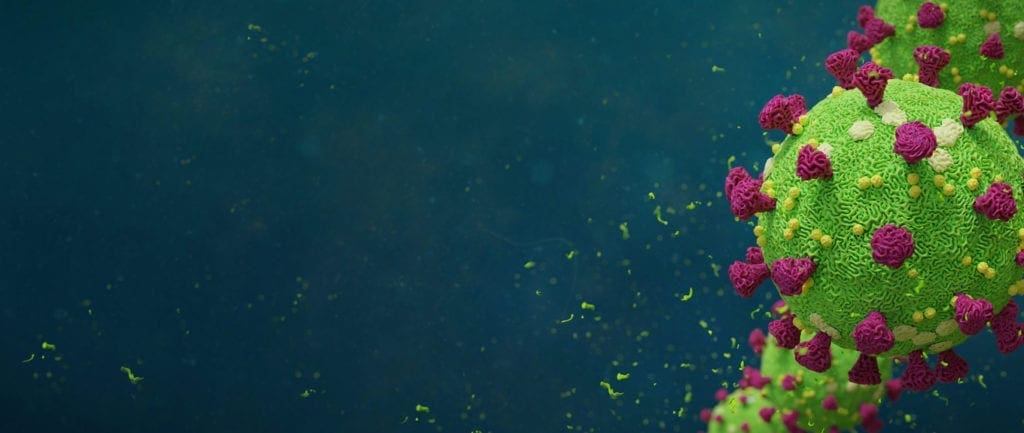Orthodontics in a Post-COVID-19 World
This is a guest post by Greg Huang, Professor of Orthodontics at the University of Washington. This is a great personal view of the COVID-19 pandemic and returning to work as an orthodontist. It is well worth a read.
The pandemic
COVID-19 has forced us to face interesting, serious, and uncomfortable questions about many of our core values and beliefs. For example, do you support stay-at-home orders to flatten the curve? Alternatively, do you believe individuals at lower risk should be able to continue normal social interactions to develop herd immunity? Many countries have adopted the first policy, while a few have chosen the latter. Do you believe public health is more important than the economy? Just look at the battle between Democrats and Republicans in the US to see how disparate opinions can be regarding this question. How much can/should a community spend addressing the COVID-19 pandemic? In Seattle, one recently recovered COVID-19 patient left the hospital with medical bills totalling over one million dollars. The 4 hospitals in the University of Washington Medical Center system are anticipated to lose more than $500 million in the first half of 2020.
COVID-19 and Dentistry

In dentistry, the questions are not any more comfortable. A New York Times article reported that 4 out of 5 of the riskiest occupations for acquiring a COVID-19 infection are in the dental field. This is due to our proximity to the nose and mouth and the creation of aerosols during our work. These occupations are hygienists, oral surgeons, dental assistants, and dentists. What changes to our practices are needed to keep dental patients, staff, and doctors safe? Again, opinions differ significantly, with some feeling that our protective measures were already adequate, while others suggest very significant modifications to our workspace and PPE are necessary.
The Dental Profession is facing its biggest infection management crisis since the AIDS epidemic in the 1980s. It was then that we began wearing gloves and masks, and I remember the push back from some practising dentists. Similarly, there is some push back now to changes that are being mandated or proposed.
But every crisis, no matter how difficult, is also an opportunity for change and improvement. While dentistry has had well-established infection prevention practices, they have primarily been directed toward blood-borne pathogens. This is the time to recognize, assess, and reduce risk from airborne infections. Hopefully, a vaccine and an effective treatment will be developed for COVID-19 soon. However, there will likely be other novel viruses in the future, and we should also consider the chemicals and particulates that are in the aerosols we generate. It makes sense to me to minimize the creation of aerosols and to capture them at the point of generation if at all possible.
Orthodontics
These are challenging times. As an orthodontist, I am grateful that our risk is lower than colleagues in other areas of dentistry. But we see lots of patients who fall in the age range where COVID infections may not be accompanied by symptoms. And we see lots of patients every single day. I don’t think we should let our guard down.
In our state, we have been seeing patients for about 5 weeks. We started in mid-May, seeing a few emergency patients. Then, we transitioned to a light schedule of more straightforward procedures in early June. Since mid-June, we are back to an almost regular schedule, including aerosol-generating procedures. Our venture back to clinical activity has been sprinkled with many emotions, including anxiety about contracting or spreading the virus, frustration with the additional PPE required, and relief that we are finally back to work.
I must admit that I have not felt comfortable at work yet, and I kept wondering why. It dawned on me earlier this week, as patients were sitting masked waiting to see me, and then masked up as soon as their procedures were completed. All our work, all the wonderful smiles we are creating are covered up. We can no longer share a smile to make a patient feel welcome, reassure a parent, or communicate with a staff member. This is what I was missing, and this is what the world is missing right now – THE POWER OF SMILES! I will be so happy and relieved when COVID-19 is a manageable disease, and we can all unmask and smile at each other again.

Emeritus Professor of Orthodontics, University of Manchester, UK.
Nicely done, indeed. This brings to mind the psychological studies which revealed that although when surveyed most people believe “eyes are the window to the soul” – the most influential part of the human face is actually the lower facial third. As I recall this research-based information appeared in the Psychological Aspects of Facial Form: Proceedings of a Sponsored Symposium Honoring Prof Robert E. Moyers, Held February 29 and March 1, 1980, in Ann Arbor(Monograph No 11, Craniofacial Growth Series).
Dr. Huang is “right on” as always. I enjoyed his post and agree that covering up our beautifully crafted smiles, although necessary at this time, is very sad. Best to all of our colleagues.
Great post from Greg who enjoys great respect from many in the specialty. I believe he has echoed the thoughts of so many of us in these crazy and uncertain times
Great comments Greg. You are so right. We WILL get through this and we WILL see the smiles again. We all miss them!! And-our safety procedures will be improved long term.
Great post.
This is also the way I feel!
Enjoyed reading this post- Thank you for your insights. As Mark commented, you captured all our thoughts very well!
I enjoyed reading this post and agree with Dr Huang, we are feeling sad, depressed, anxious, insecure about the future, as orthodontists we have lost the purpose of our treatments because nobody can smile nowadays , or the smile is hiding behind the protection masks!